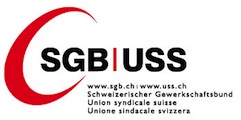Publications des institutions partenaires
Severin Bernhard and Till Ebner: Cross-border Spillover Effects of Unconventional Monetary Policies on Swiss Asset Prices
Unconventional monetary policies (UMPs) by the Federal Reserve, the European Central Bank, the Bank of England and the Bank of Japan exert important spillover effects on asset prices in Switzerland if market anticipation of UMP announcements is properly accounted for. Using a broad event set and a long-term bond futures-based measure as a proxy for market anticipation of the...
Institution partenaire
English / 01/02/2017
Severin Bernhard and Till Ebner: Cross-border Spillover Effects of Unconventional Monetary Policies on Swiss Asset Prices
Unconventional monetary policies (UMPs) by the Federal Reserve, the European Central Bank, the Bank of England and the Bank of Japan exert important spillover effects on asset prices in Switzerland if market anticipation of UMP announcements is properly accounted for. Using a broad event set and a long-term bond futures-based measure as a proxy for market anticipation of the...
Institution partenaire
English / 01/02/2017
Jonas Meuli, Thomas Nellen and Thomas Nitschka: Securitisation, loan growth and bank funding: the Swiss experience since 1932
This paper empirically analyses securitisation in Switzerland from a macroeconomic and bank balance sheet perspective based on a novel and near-comprehensive data set on a specific form of securitisation over the sample period from 1932 to 2014. The Swiss Pfandbrief is a distinct covered bond with a similar institutional framework as the U.S. Federal Home Loan Bank System.
Institution partenaire
English / 23/12/2016
Jens H. E. Christensen and Signe Krogstrup: A Portfolio Model of Quantitative Easing
This paper presents a portfolio model of asset price effects arising from central bank large-scale asset purchases, commonly known as quantitative easing (QE). Two financial frictions—segmentation of the market for central bank reserves and imperfect asset substitutability—give rise to two distinct portfolio effects. One derives from the reduced supply of the purchased assets. The...
Institution partenaire
English / 23/12/2016
Rita Fleer, Barbara Rudolf and Mathias Zurlinden: Price change dispersion and time-varying pass-through to consumer prices
This paper examines the relationship between the dispersion of changes in prices and the medium-run exchange rate pass-through in Swiss data. The prices considered are the elementary indices that form the basic building blocks for the construction of the CPI. The results indicate that uctuations in the crosssectional dispersion of changes in these price indices inform about variation...
Institution partenaire
English / 23/12/2016
Jonas Meuli, Thomas Nellen and Thomas Nitschka: Securitisation, loan growth and bank funding: the Swiss experience since 1932
This paper empirically analyses securitisation in Switzerland from a macroeconomic and bank balance sheet perspective based on a novel and near-comprehensive data set on a specific form of securitisation over the sample period from 1932 to 2014. The Swiss Pfandbrief is a distinct covered bond with a similar institutional framework as the U.S. Federal Home Loan Bank System.
Institution partenaire
English / 23/12/2016
Jens H. E. Christensen and Signe Krogstrup: A Portfolio Model of Quantitative Easing
This paper presents a portfolio model of asset price effects arising from central bank large-scale asset purchases, commonly known as quantitative easing (QE). Two financial frictions—segmentation of the market for central bank reserves and imperfect asset substitutability—give rise to two distinct portfolio effects. One derives from the reduced supply of the purchased assets. The...
Institution partenaire
English / 23/12/2016
Rita Fleer, Barbara Rudolf and Mathias Zurlinden: Price change dispersion and time-varying pass-through to consumer prices
This paper examines the relationship between the dispersion of changes in prices and the medium-run exchange rate pass-through in Swiss data. The prices considered are the elementary indices that form the basic building blocks for the construction of the CPI. The results indicate that uctuations in the crosssectional dispersion of changes in these price indices inform about variation...
Institution partenaire
English / 23/12/2016
Gregor Bäurle, Daniel Kaufmann, Sylvia Kaufmann and Rodney W. Strachan: Changing dynamics at the zero lower bound
The interaction of macroeconomic variables may change as the nominal short-term interest rates approach zero. In this paper, we propose an empirical model that captures these changing dynamics with a time-varying parameter vector autoregressive process. State-dependent parameters are determined by a latent state indicator. This state indicator follows a distribution with time-varying...
Institution partenaire
English / 30/11/2016
Gregor Bäurle, Daniel Kaufmann, Sylvia Kaufmann and Rodney W. Strachan: Changing dynamics at the zero lower bound
The interaction of macroeconomic variables may change as the nominal short-term interest rates approach zero. In this paper, we propose an empirical model that captures these changing dynamics with a time-varying parameter vector autoregressive process. State-dependent parameters are determined by a latent state indicator. This state indicator follows a distribution with time-varying...
Institution partenaire
English / 30/11/2016
Adrian Jäggi, Martin Schlegel and Attilio Zanetti: Macroeconomic surprises, market environment and safe-haven currencies
In this paper, we study the reaction of the CHF and JPY to macroeconomic surprises and changes in the broader market environment before and during the crisis using high-frequency data. We show that both currencies are traditionally highly sensitive to macroeconomic surprises. This link, however, was significantly magnified during the crisis and effects persisted during times when...
Institution partenaire
English / 23/11/2016
Adrian Jäggi, Martin Schlegel and Attilio Zanetti: Macroeconomic surprises, market environment and safe-haven currencies
In this paper, we study the reaction of the CHF and JPY to macroeconomic surprises and changes in the broader market environment before and during the crisis using high-frequency data. We show that both currencies are traditionally highly sensitive to macroeconomic surprises. This link, however, was significantly magnified during the crisis and effects persisted during times when...
Institution partenaire
English / 23/11/2016
Alain Galli: Sticky consumption and wealth effects in Switzerland
When assessing the effect of changes in wealth on household expenditures, most empirical studies have used cointegration-based approaches. These approaches rely on the existence of a stable long-run relationship among consumption, wealth and income. However, in Switzerland no such relationship seems to be present after 2001. Motivated by this issue, this paper applies a recently...
Institution partenaire
English / 04/11/2016
Alain Galli: Sticky consumption and wealth effects in Switzerland
When assessing the effect of changes in wealth on household expenditures, most empirical studies have used cointegration-based approaches. These approaches rely on the existence of a stable long-run relationship among consumption, wealth and income. However, in Switzerland no such relationship seems to be present after 2001. Motivated by this issue, this paper applies a recently...
Institution partenaire
English / 04/11/2016
Lucas Marc Fuhrer, Benjamin Müller and Luzian Steiner: The Liquidity Coverage Ratio and Security Prices
What is the added value of a security which qualifies as a "high-quality liquid asset" (HQLA) under the Basel III "Liquidity Coverage Ratio" (LCR)? In this paper, we quantify the added value in terms of yield changes and, as suggested by Stein (2013), call it HQLA premium. To do so, we exploit the introduction of the LCR in Switzerland as a unique quasi-natural experiment and we find...
Institution partenaire
English / 13/09/2016
Silvio Schumacher: Networks and lending conditions: Empirical evidence from the Swiss franc money markets
This paper provides an empirical analysis of the network characteristics of two interrelated interbank money markets and their impact on overall market conditions. Based on transaction data from the unsecured and secured Swiss franc money markets, the trading network structures are assessed before, during and after the financial market crisis. It can be shown that banks in the...
Institution partenaire
English / 13/09/2016
Gregor Bäurle and Rolf Scheufele: Credit cycles and real activity - the Swiss case
The global Great Recession has sparked renewed interest in the relationships between financial conditions and real activity. This paper considers the Swiss experience, studying the impact of credit market conditions and housing prices on real activity over the last three decades through the lens of a medium-scale structural Bayesian vector autoregressive model (BVAR). From a...
Institution partenaire
English / 13/09/2016
Lucas Marc Fuhrer, Benjamin Müller and Luzian Steiner: The Liquidity Coverage Ratio and Security Prices
What is the added value of a security which qualifies as a "high-quality liquid asset" (HQLA) under the Basel III "Liquidity Coverage Ratio" (LCR)? In this paper, we quantify the added value in terms of yield changes and, as suggested by Stein (2013), call it HQLA premium. To do so, we exploit the introduction of the LCR in Switzerland as a unique quasi-natural experiment and we find...
Institution partenaire
English / 13/09/2016
Silvio Schumacher: Networks and lending conditions: Empirical evidence from the Swiss franc money markets
This paper provides an empirical analysis of the network characteristics of two interrelated interbank money markets and their impact on overall market conditions. Based on transaction data from the unsecured and secured Swiss franc money markets, the trading network structures are assessed before, during and after the financial market crisis. It can be shown that banks in the...
Institution partenaire
English / 13/09/2016
Gregor Bäurle and Rolf Scheufele: Credit cycles and real activity - the Swiss case
The global Great Recession has sparked renewed interest in the relationships between financial conditions and real activity. This paper considers the Swiss experience, studying the impact of credit market conditions and housing prices on real activity over the last three decades through the lens of a medium-scale structural Bayesian vector autoregressive model (BVAR). From a...
Institution partenaire
English / 13/09/2016
Pagine
Le portail de l'information économique suisse
© 2016 Infonet Economy












